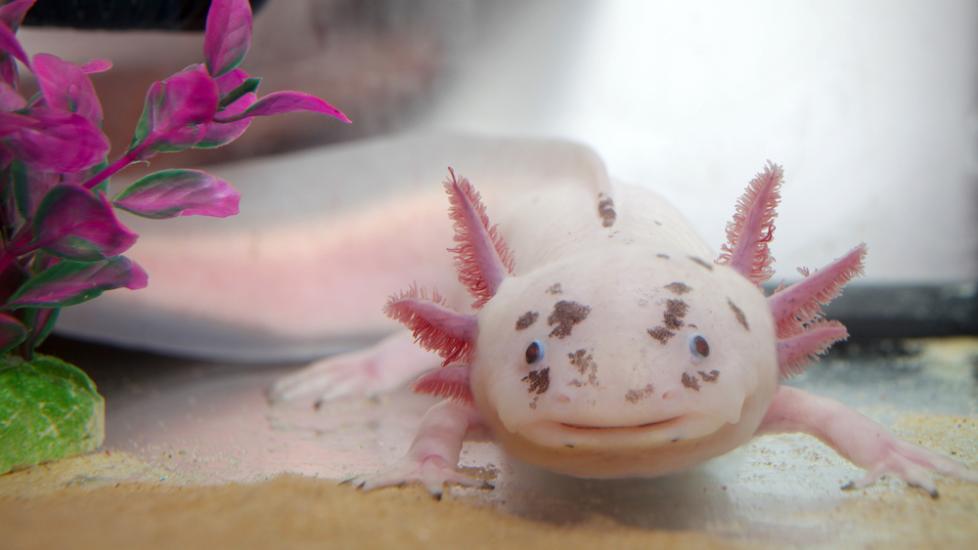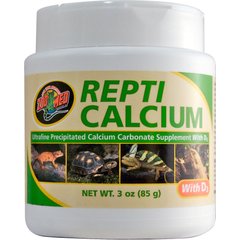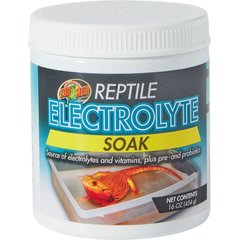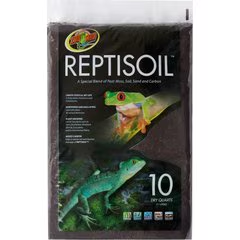Axolotl Colors
What Is an Axolotl?
Axolotls (Ambystoma mexicanum) are one of the more unique pets that are becoming more popular for pet parents. These fully aquatic amphibians have a unique look with expressive gills and a continuous smile. Axolotls are critically endangered in the wild despite them being readily available for placement in pet parent homes. With proper housing and care axolotls can be great pets.
What Do Axolotls Look Like?
Most axolotls reach about 9 inches in length and can reach a weight up to 300 grams. Sexual maturation of axolotls occurs between 18-27 months of age or when they reach between 6 inches in length or greater. Some can reach up to 12 inches in length.
Axolotls are a unique form of a salamander because they retain gills for the duration of their life. Axolotls stop developing and reach sexual maturity during the larval stage and maintain these juvenile characteristics. This is called neoteny.
One of the most unique characteristics of axolotls is that they can regenerate many portions of their body. This allows them to heal from injuries by themselves completely without any scars. This is one of the reasons they are readily used in research.
A wild type of axolotl is typically brown and tan with gold speckles with an olive undertone. This coloration aids in camouflage in the wild. However, because of the pigment cells in their skin, axolotls can appear as different colors. This helps them hide in murky waters.
Axolotl Morphs
A morph is a trait that is selectively bred in the amphibian hobby—this could be a certain color or appearance. These color differences can be naturally occurring or as a product of a laboratory intervention.
In amphibians there are a few different cell types that can create pigment. These are called chromatophores. Below are the different types of chromatophores that produce their different pigments and appearances:
-
Melanophore: These cells contain a pigment called melanin or other less common black pigments. This pigment produces a black coloration, making amphibians have a dark skin.
-
Xanthophore: These cells contain carotenoids that create a yellow coloration. Carotenoids are red, yellow, or orange pigments that are absorbed in cells from diets.
-
Iridophore: These cells form a thin layer of reflective crystal-like substances within the skin. The change in the structure of these structures can create camouflage or an iridescence in many different reptiles or amphibians.
Below is a list of some of the common morphs that exist. There may be more morphs as axolotls continue to be selectively bred.
1. Leucistic: This morph is similar to an albino animal, however there is one distinct difference—the eyes have pigment. The leucistic morph has black or dark blue eyes. This morph is light-colored or almost translucent. The skin can have a pink hue and they have pink gills.
2. Golden Albino: Golden albinos have white to translucent skin, but they also have light colored speckles over their body as juveniles. As they grow, it turns into a golden hue. They have pink gills and red eyes. This pink and red appearance is because of the absence of melanin within their skin.
3. Wild Type: These axolotls are similar in coloration to those found in the wild. They can range in colors from dark grey and green to black and brown. These axolotls often have speckling and iridescence due to the chromatophores such as melanophores and iridophores. These colors help them camouflage in the wild.
4. Piebald: This morph is typically white with dark colored or black patches along the top of the body. They have red gills and dark blue or black eyes, similar to the leucistic morph. The dark patches darken with age.
5. Mosaic: This axolotl morph usually has a body heavily mottled white and black with some golden flakes. Their gills can be striped with red and purple colors with different colored eyes. They are often derived from albino and melanoid parents. This pattern occurs due to fusion of two eggs.
6. Copper: The copper morph is unique because they have a brown to copper colored body that is covered in light spots, dark spots, and iridophores.
7. Lavender: This morph is frequently called the silver Dalmatian because of the spots that can develop on the skin. These animals can range in color from dark purple to a silvery purple with silver and dark grey spots resembling a Dalmatian dog.
8. Black Melanoid: This dark axolotl can either be completely black or be lighter from dark grey to green. This morph usually has dark purple gills. These do not produce any iridescent coloration. This morph has been known to change color as it adjusts color to camouflage.
9. White Albino: White albinos have white to translucent skin with pink gills and red eyes. This is caused by the absence of melanin within their skin.
10. Speckled Leucistic: These axolotls are variation of the leucistic mutation. They have dark green, brown, or black speckles on their heads, tails, and back. The amount of speckling is not as extreme.
11. Chimera: This form of axolotl is not a true morph as it is created in a laboratory setting. These axolotls will have one side of their body that is a different morph than the other side. Their name is derived because they have two separate genomes on each side of their body. These axolotls look like two axolotls put together, which is how they are produced. Two developing eggs are fused to form one individual.
12. Heavily Marked Melanoid: This is a variation of the black melanoid axolotl. This morph has dark skin but with splotches of light green to yellow.
13. Green Fluorescent Protein (GFP): Axolotls that have GFP are unique as they glow green under blacklights. This morph was created in a lab setting where a protein that fluoresces called Green Fluorescent Protein was inserted into the genome to identify certain animals with genetic changes. Animals with these genes were released to the private breeding sector and are now common. Lighter colors glow stronger.
14. Firefly: This is a rare morph that can have any color body, but they have a Green Fluorescent Protein (GFP) tail that glows under black light. This resembles a firefly. These morphs are thought to be manmade by transplanting tails and are considered an artificial morph since the trait is not genetic.
15. Enigma: These axolotls start out all black and grow to be a grey and white with patches of an iridescent gold. There is very little documentation about the enigma morph.
Featured Image: iStock.com/narcisa




